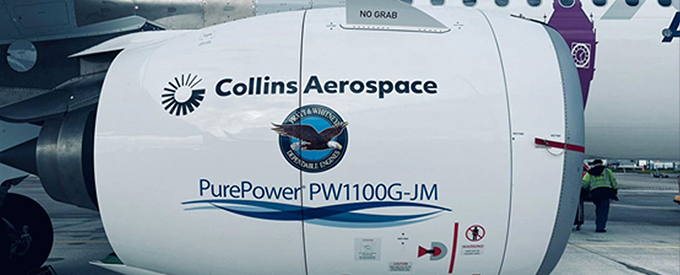2022-12-01
A321XLR, En Route to 2024 Launch
After providing nearly 20,000 nacelles to Airbus over the years, Collins Aerospace is part of the original equipment manufacturer’s (OEM) team preparing for the launch of its newest aircraft in 2024 — the A321XLR.
The A321XLR is the next step in the evolution of A320neo single-aisle family meeting the market demand for increased range and payload, creating more value for airlines by enabling economically viable services on longer routes.
The A321XLR will deliver an unprecedented single-aisle aircraft range of up to 4,700nm (8700 km), with 30 per cent lower fuel consumption per seat compared to previous-generation aircraft, as well as reduced NOx emissions and noise.
Collins has eight decades of aerostructures experience and has certified 20 modern nacelle programmes over the past decade alone.
Corey Gloede, chief engineer for Airbus Aerostructures Programmes at Collins Aerospace, said: “With our long history designing and manufacturing the full aerodynamic nacelle structure that surrounds the jet engines on Airbus platforms ranging from the A220 to the A350, Collins has delivered the majority of our nacelles to the A320 family of aircraft.”
Successful Test
The second test prototype aircraft for Airbus’ upcoming A321XLR — outfitted with Pratt & Whitney’s Geared Turbo Fan (GTF) engine combined with Collins’ nacelle — successfully completed its first flight test on September 23, 2022.
Just a few weeks later on October 4, Airbus started development flight testing of the new GTF Advantage (GTFA) engine and Collins’ nacelle on an A320neo aircraft. Both Collins and Pratt & Whitney are Raytheon Technologies businesses.
What’s important about these flight tests is how the propulsion systems on these platforms not only deliver industry-leading sustainability benefits and dependable operating costs, but how GTF-powered aircraft reduce fuel consumption and carbon dioxide emissions by up to 16-20 per cent, nitrogen oxide emissions by up to 50 per cent and noise footprint by up to 75 per cent. That’s key for an aerospace industry that’s looking to be carbon neutral by 2050.
GTFA Engine
Looking to the future, the new GTFA engine will further lower fuel consumption and carbon dioxide emissions by up to one per cent compared to the current model GTF engine. Since the new engine is capable of a take-off thrust improvement of up to four per cent at sea level, the engine should enable the longer range and higher payload that will be required for the new A321XLR aircraft.
For the A320neo specifically, Collins’ nacelles are designed to ensure low weight, low noise and high strength. This high-technology nacelle system contributes significantly to the A320neo’s superior fuel performance and noise reduction efficiencies.
As the GTF engine eventually evolves into the GTFA and enters service, Collins nacelles won’t require any configuration changes because they’re designed with product commonality to ensure intermixability .


No Comments